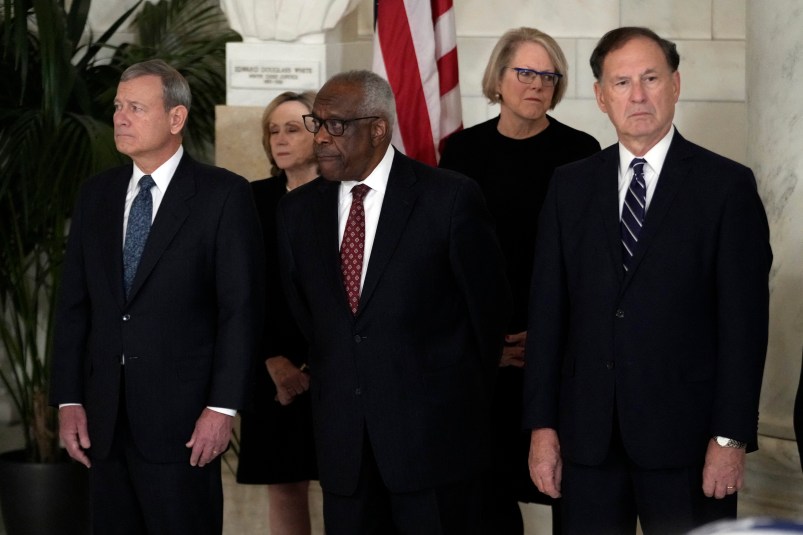The Supreme Court announced Friday that it would take up a case centered on abortion care in emergency medical situations, leapfrogging the 9th Circuit Court of Appeals, which was scheduled to hear arguments later this month.
The Court will also reimpose Idaho’s abortion ban in emergency room situations, something Republican state legislators had asked the justices to do well over a month ago. It’s an ominous sign for abortion rights supporters, and means that the ban will remain in place until the Court’s final ruling. The case will be argued in the April 2024 session.
The Idaho case, and a mirror one out of Texas, center on whether abortions are part of federally mandated emergency care in hospitals that accept Medicare funding. The Biden Health and Human Services Department had sent out a letter shortly after the Dobbs ruling reminding hospitals that they are required by federal law to perform abortions when they are necessary to stabilize a patient, even in states with bans.
Texas argued that the letter was not simply a reminder of the statute — called the Emergency Medical Treatment and Active Labor Act (EMTALA) — but an unlawful expansion of it. The 5th Circuit Court of Appeals sided with Texas earlier this week, ruling that EMTALA’s “silence” on abortions (though it’s “silent” on nearly all the specifics of what care physicians should provide in these situations) proves that the law does not require physicians to provide abortions — even when the abortions are necessary to the law’s mandate to stabilize the patient.
In Idaho, the Biden administration had sued the state, arguing that its near-exception free abortion ban violated EMTALA’s requirements. The government won at district court, where it got the ban blocked in emergency room situations, and only suffered a brief defeat at the appellate court. There, a 9th Circuit panel composed of three Donald Trump appointees ruled against the government and reimposed the abortion ban. The full 9th Circuit quickly stepped in, agreed to rehear the case, blocked the abortion ban and denied the Republican legislators’ request to lift it again. That’s when the Idaho Republicans went to the Supreme Court.
The Supreme Court likely would have gotten involved in the case eventually, either on appeal from the appellate courts, or to resolve a circuit split, should the 9th Circuit have ultimately ruled differently than the 5th. But the way it did so — skipping over the 9th Circuit and reimposing the Idaho ban for the duration — does not bode well for the Biden administration.
The EMTALA letter was part of the Biden administration’s attempts to reinforce abortion rights in the narrow spaces where federal law dictates, and, specifically, to retain patients’ right to the procedure at least in life-or-death situations. The 5th Circuit has already ensured that no such safety net exists in Texas; now, for at least the next several months, the Supreme Court has removed it from Idaho’s emergency rooms as well.
Read the order here:







6-3 with Alito and Thomas co-authoring what will be come to be known as the “Women are only vessels for child-bearing” decision.
This court can jump a circuit court because they MUST stop women from making choices over their own bodies, but thinks they have plenty of time to let the DC circuit to rule on the issue of whether the president has absolute immunity beflre they can do anything.
sigh
How sad and ironic.
This Supreme Court has become the “DEATH PANELS” that Republicans smeared Obamacare with.
I have one disagreement with the article:
I think what the Supreme Court did, especially reimposing the Idaho Ban for the duration of its deliberations, bodes very well for the Biden administration especially in regard to November 5th, 2024.
It takes five votes to grant or lift a stay, so the Fascist Five are dead-set on letting states kill women with crisis pregnancies. Just in time for election season!